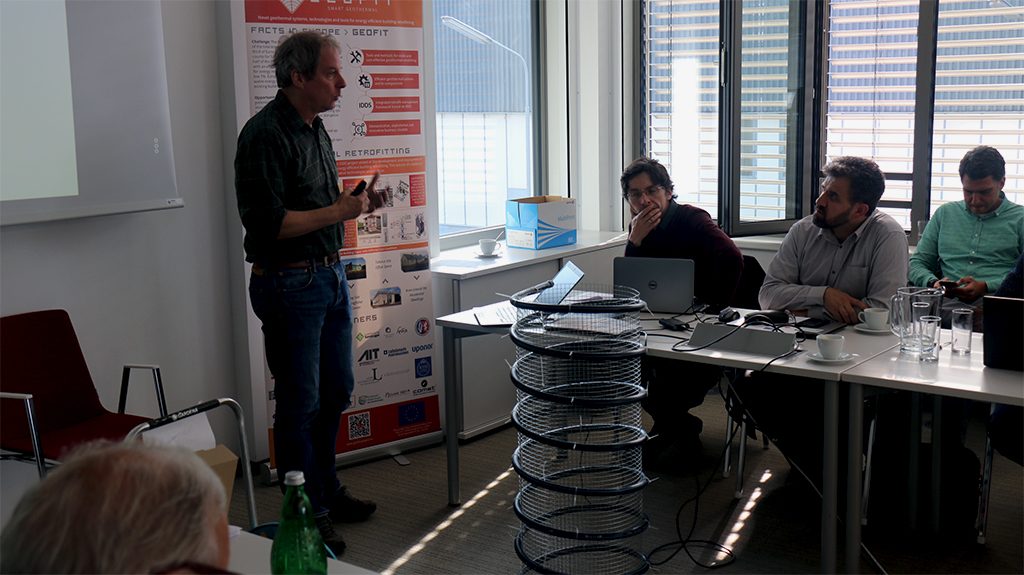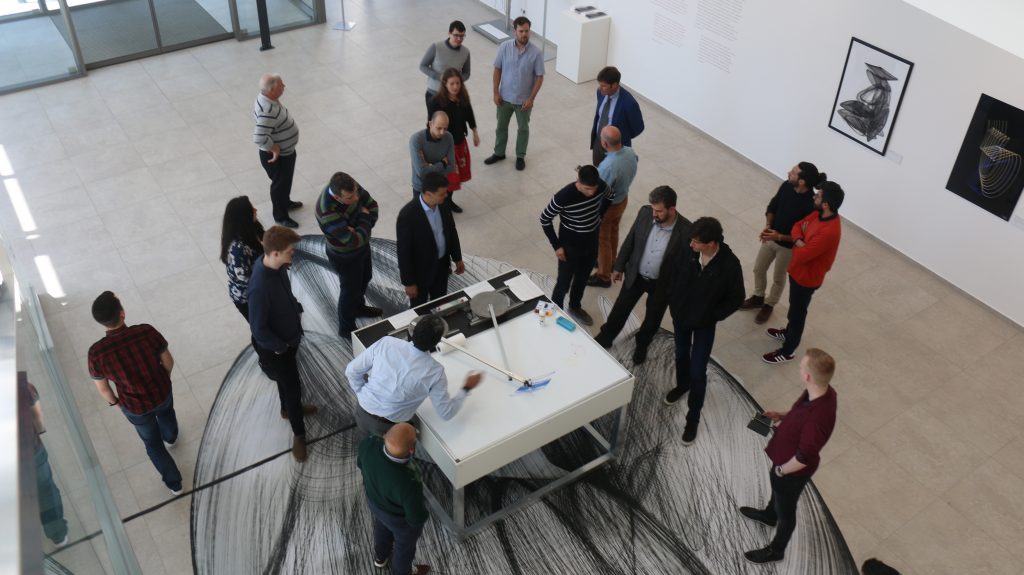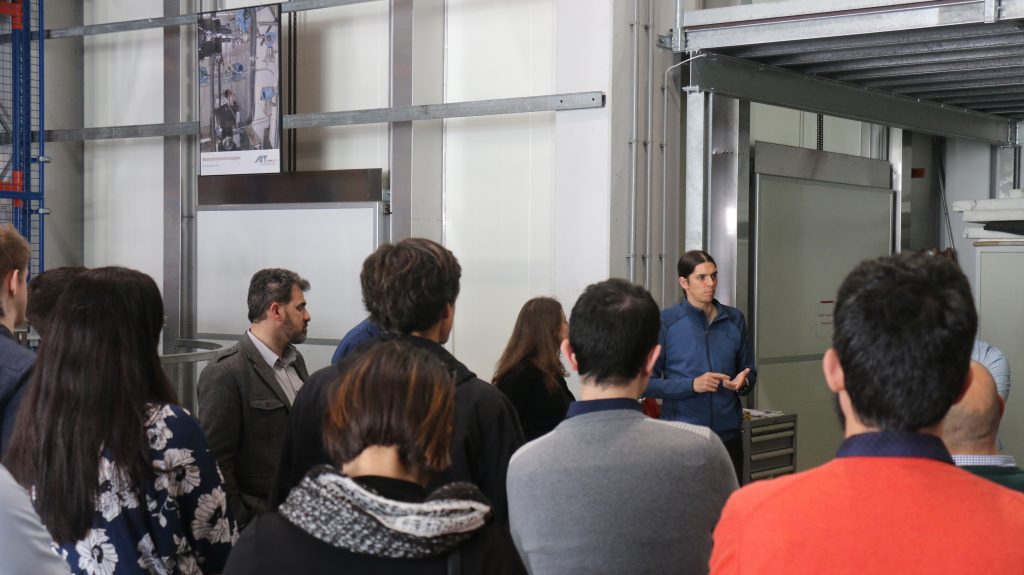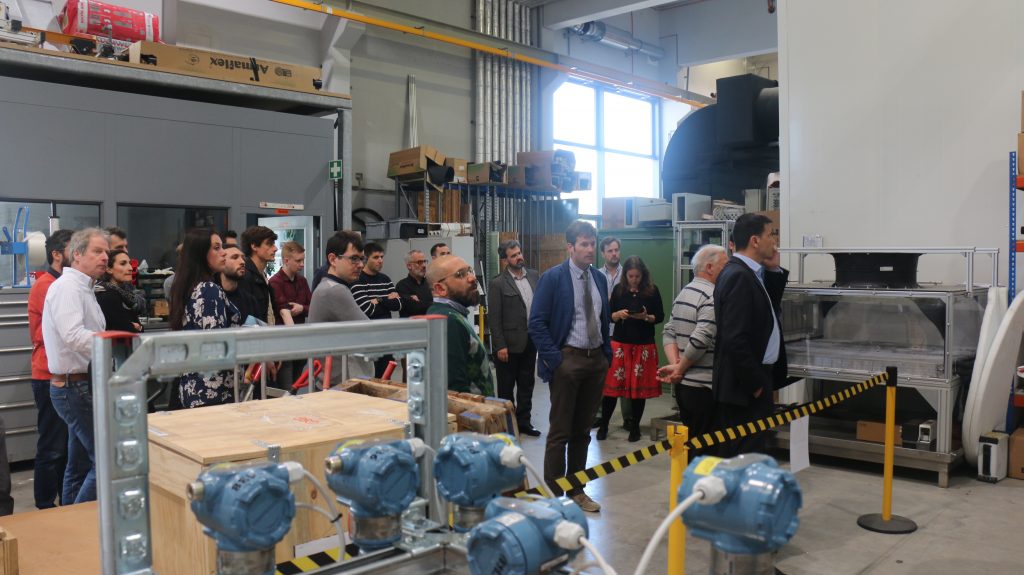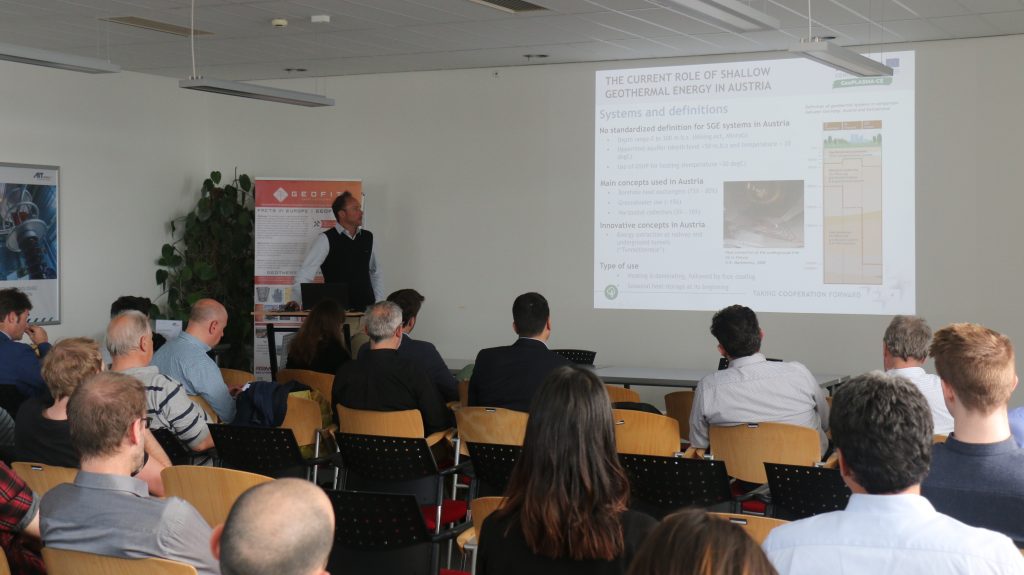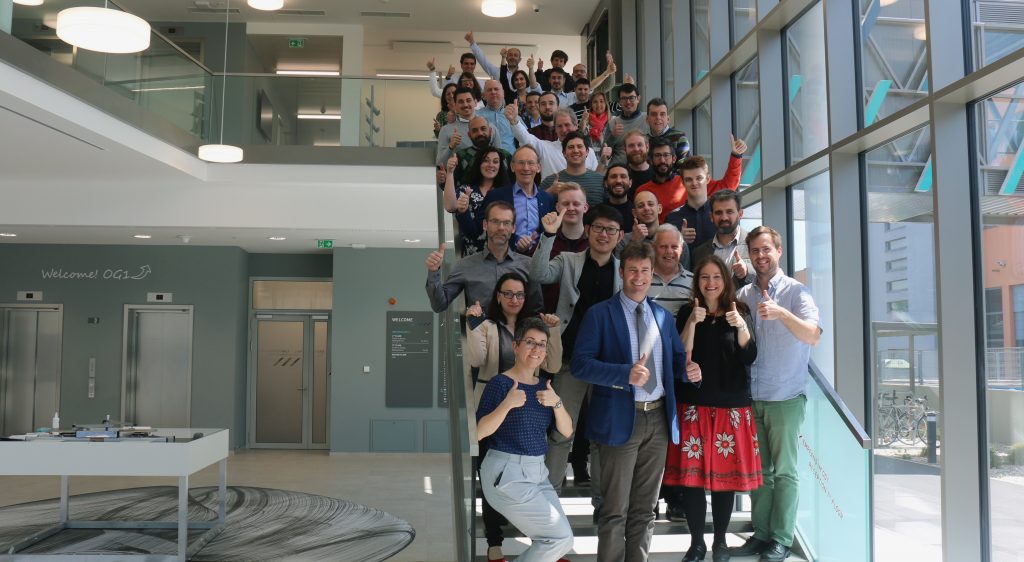September & October 2022
The EU-funded project GEOFIT is an integrated industrially driven action aimed to deploy cost-effective enhanced geothermal systems on energy-efficient building retrofitting.
Upon the completion of the pilots, it is time to present and share the results, and bring all the experience accumulated to potential stakeholders.
GEOFIT is organizing three virtual trainings addressed to professionals and researchers in the field of geothermal energy, renewables and construction sector who wish to learn more about Smart Geothermal Systems.
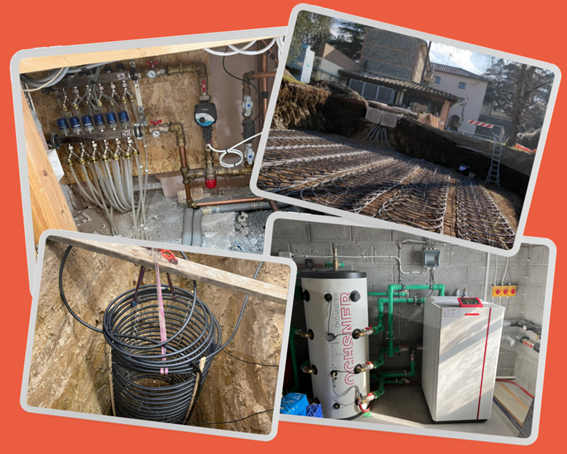
1st Training: GEOFIT Training on Ground Source Heat Exchangers and Geothermal Heat Pumps
Date: 20th September 2022 | 10 – 12 CEST
Speakers: Henk Witte (Groenholland) and Michael Lauermann (AIT)
What to expect?
This webinar will present the research, development and assessment of various typologies of heat pumps and ground source heat exchangers (GHEX) studied in the EU-funded project GEOFIT which focuses on geothermal retrofitting across a range of building typologies (residential, tertiary, educational).
Regarding GHEX, different typologies have been studied such as vertical and horizontal boreholes, slinky HEX, and earth baskets. Test campaigns were performed both in the lab and at the pilots and optimal geometries were studied aiding to the development of an engineering tool for optimal sizing of the GHEX which will be presented.
Regarding heat pumps, different typologies of electrical and heat-driven Heat Pumps (HP) have been optimised and implemented to include high temperature HPs with low GWP refrigerants, off-the-shelves HPs integrated in residential retrofitting projects, and hybrid HPs using gas and heat to supply heating and cooling. Results from analysis, prototyping and fielding will be presented.
2nd Training: GEOFIT Training on On-The-Ground Experience with Four Pilots
Date: 27th September 2022 | 10 – 12 CEST
Speakers: Antonio Galindo (COMSA), Romain Lhomer (NOBATEK), Claudia Fabiani (UNI PERUGIA), Avril Ní Shearcaigh (CFOAT) and Anna Mundet (Sant Cugat Municipality)
What to expect?
This webinar will present the field implementations of four pilots from the EU-funded project GEOFIT.
- A residential single-family-house on the Aran Island (Ireland). The building was insulated, provided with an innovative radiant floor heating and with an electric heat pump connected to a vertical borehole.
- An elementary school in Sant Cugat (Catalunya, Spain). A large vertical boreholes field is supplying heat to an electric heat pump replacing some of the existing gas boilers. The horizontal connection boreholes field – technical room was achieved via horizontal directional drilling. A high temperature radiant ceiling system is providing free cooling in summer exploiting the vertical boreholes.
- An office building in Bordeaux (France). A vertical borehole coupled to earth baskets are providing heat to a hybrid driven heat pump (gas- and electricity-driven) in an office building. The heat pump also provides cooling in summer.
- A historic building in Perugia (Italy). The Sant’Apollinare Fortress was already equipped with a radiant floor heating system, which is now being supplied by a gas-driven heat pump. The heat pump also provides cooling in summer. Slinky geothermal heat exchangers have been installed.
The pilots in GEOFIT have resulted in a series of lessons learned and validation of scientific progress. Sharing these experiences is a key objective of the webinar.
3rd Training: GEOFIT Training on Radar Technologies for Ground Inspection and Structural Health Monitoring, Thermal Load Estimation of Buildings and Use of Digital Twin Management Software (GeoBIM)
Date: 11th October 2022 | 10 – 12 CEST
Speakers: Guido Manacorda (IDSGEO), Fabio Giannino (IDSGEO), Joan Tarragona (EURECAT), Alessandro Piccinini (NUI Galway), Andrea Frazzica (CNR ITAE), Giuseppe Dino (CNR ITAE), Hugo Viot (NOBATEK), Henrikki Pieskä (KTH), Adriaan Brebels (iLECO) and Mikel Borràs & Juan Ramón (IDP))
What to expect?
This third and final training webinar will present a set of supporting technologies and processes for geothermal retrofitting resultant of work carried out in the EU-funded project GEOFIT. Topics and results to be presented include:
- The use of Ground Penetrating Radars for soil inspection and Ground-Based Syntethic Aperture Radar for structural health monitoring / site quality assurance (with respect to risk)
- Novel approaches and models to simulate the energy load of retrofitted buildings including the validation process
- An advanced energy management system capable of making decisions based on energy tariffs
- A newly developed digital twin environment called GEOBIM that including models of ground source heat exchangers
These technologies and their associated services / processes have been validated during the GEOFIT scientific program and pilot activities.
Don’t miss the opportuniy to learn about GEOFIT main findings and results, especially, how you can benefit from this technology!


